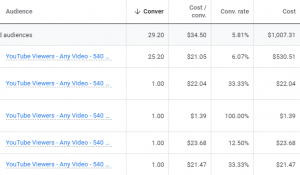Danny is one click away from leaving your blog. And you must attract him, tie him, and lock him before he vanishes. But how?
How can I hook the readers? Gone are the days when this question used to haunt me in my initial times as a professional writer. But now I am well-equipped with strategies to create engaging introductions for blogs.
In this article, I am listing seven methods to write engaging blog introduction which have worked for me. But first, let’s see how important a blog introduction is, and what it should have.
Why Is an Introduction Important?
As mentioned in the first paragraph, you must persuade your audience to read your blog. And that’s what an interesting introduction does.
“Your blog introduction attracts your audience, ties them,
and locks them before they run away.”
The introduction acts as a guide and paves a way for the readers to follow. It teases them and makes them want to read the rest of it.
An introduction tells the readers what the blog is about. Without it, they’ll feel confused, and before you know it, they will leave your blog. And that’s why the introductory paragraph is important.
What Should Blog Introduction Have?
Now that you know you’ve to drive to the point with your intro, craft it like an elevator pitch.
Know the intent of your readers and outline what you want to communicate in your blog. Then, write the introduction clarifying what’s in it for them and why they should care.
So, a good blog introduction should have –
- Hook; to pull the readers
- Transition; to connect the hook with the content
- Thesis; to summarize the content of your blog
How to Write Engaging Introductions?
You have read about the importance of an introduction. Now, it’s time to see what it takes to nail an engaging introduction to your next blog post. Keep reading.
1. Enter with a Compelling Quote
Beginning your blog with a relevant quote is one of the best ways to attract your audience. And when the quote is from a renowned personality, it adds to your credibility. It also acts as proof to support the views you put forward in the blog.

For example, when talking about the importance of simplicity in graphics, you can begin your blog with a quote by the logo artist Lindon Leader – “I strive for two things in design: simplicity and clarity. Great design is born of those two things.”
The quote confirms what you want to deliver on your blog.
However, when choosing a quote for an introduction, make sure you don’t begin with the quotes which have been used zillions of times. Most of them don’t charm the readers that much.
2. Share an Interesting Fact
Similar to a powerful quote, a fact that takes your audience by surprise is a hook. And that fact shouldn’t be common to the niche of the blog. The fact should be unusual yet relevant to the main theme of your content. The more unusual the fact is, the higher is the factor of surprise.
However, you should make sure that the fact doesn’t look unwanted in your story, otherwise, you will break your readers’ trust.
After you have hooked your readers with the unusual but relevant fact, the next, you should try to establish is the relationship between the facts and the rest of the content as the post proceeds.
3. Ask an Intriguing Question
Another way to engage your readers is by asking a question.

A question triggers their mind to scramble for the answer. It can be something which you answer in your article later or a random yet relevant one to pique their interest. And they read further to know the answer.
For example, when you ask how much caffeine does a cup of coffee has, your readers will try to answer. And even if some know it, they would read the article to confirm if they’re right. Now that they’re reading your content, you can unearth more facts about coffee in it.
However, when making a grand entry with a question, be careful that the answer isn’t limited to yes/no. The question should be something that gets the readers thinking.
4. Connect with an Analogy
People have been learning through analogies and related stories for a long time. And using analogies is a sure-shot way to catch attention and explain a complex process to your target audience.
These infuse fresh perspectives in your blog and engage the audience.
For example, when you compare writing to cooking, your readers will be keen to know the similarities. You can then proceed with talking about the key ingredients, the seasonings, and how a writer needs to decide the correct amount as per the content he/she is cooking.
Similar to analogies, metaphors and similes too, help people grab a concept by giving reference to a process they’re familiar with.
5. Introduce a Controversial Opinion
Introducing your blog with a bold opinion against a popular notion can turn heads towards it. The readers would either want to know how or keep reading to find a flaw in your logic.
For example, you can mention a belief that green tea is good for health, and then go on to say you disagree. You can even begin with a famous quote and then, write contradicting views. It will get the audience hitched.
Challenge the beliefs. Shout it out loud. But when you do so, make sure you have included appropriate content in your blog to back your claims.
6. Tell a Story
People love stories, especially when you begin your blog with a personal anecdote, they are eager to know more. No matter whether it is a created story or a personal one, it must be relevant for your target audience to resonate with it.
7. Offer the “Why” of Your Content
Adding the “Why” is another irresistible way to get your audience to read the content. It arouses their curiosity.
Also, by offering your readers the answer to “What’s in it for me?” you’re inviting them to stop and read more.
For example, you’re writing an article about how to attract people to your content. Show them statistics about the growth you have noticed by using a particular technique. And then, mention it’s easy to implement, and in the article, show how. Another example of using “why” is mentioned in the image shown in the previous point.
This technique of offering the why is also known as providing the teaser, and it sure gets the work done. It intrigues the readers. After all, everyone is looking for tricks to get an x% growth in their website traffic.
Final Thoughts,
Well, that was all about creating engaging introductions.
You now know the importance of the blog introduction and are armed with seven ways to nail it. So, pull out the keyboard, and bleed out the words.
You can begin with a dramatic fact, or introduce an analogy. Even better if you grip your readers’ attention with a story. Feel free to play around.
The key is to mix and match and find what works best for the blog you write.
Digital & Social Articles on Business 2 Community
(100)





